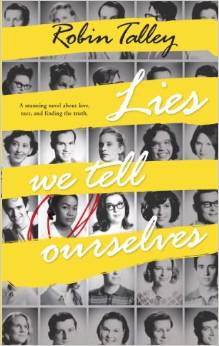2018 School Spending Survey Report
Lies We Tell Ourselves
384p. ebook available. Harlequin Teen. Oct. 2014. Tr $17.99. ISBN 9780373211333.
COPY ISBN
An intelligent, daring novel, which will draw in readers with its inherent drama. Combining civil rights struggles of the 1950s and forbidden romance (an interracial, homosexual relationship), this is a fast-paced, compelling story. Main characters Sarah and Linda have strong, distinct voices. The two teens’ differing interpretations of events are fascinating, particularly in early chapters, before the girls have acknowledged their mutual attraction. It’s also thought provoking—if uncomfortable—to glimpse Linda’s racist ideas, which elucidate attitudes of the era. Sarah and Linda are complex and exhibit increasing bravery, open-mindedness, and self-reflectiveness as the narrative progresses. Though Linda starts off as an oppressor, she’s willing to listen to Sarah’s point of view, and she ultimately rejects her father’s racist beliefs. Sarah, for her part, struggles to square her religious convictions with her sexual orientation (and ultimately succeeds). Robin Talley honestly portrays the brutality that black students faced when integrating schools. The book’s stark realities may inspire discussion about how race relations have (or haven’t) changed. The Virginia setting highlights the intense efforts to avoid desegregation: in many regions the state simply closed public schools instead of complying with the law.
In 1959 Virginia, an African American star student, Sarah, and her peers navigate racism and bigotry in the white high school they are desegregating. Amid battles for respect, Sarah befriends Linda, daughter of a vocal racist, and the two learn that their families are actually more alike than different. A plot twist regarding their friendship adds greater depth to the well-written historical story.
ALREADY A SUBSCRIBER? LOG IN
We are currently offering this content for free. Sign up now to activate your personal profile, where you can save articles for future viewing




Be the first reader to comment.
Comment Policy:
Comment should not be empty !!!